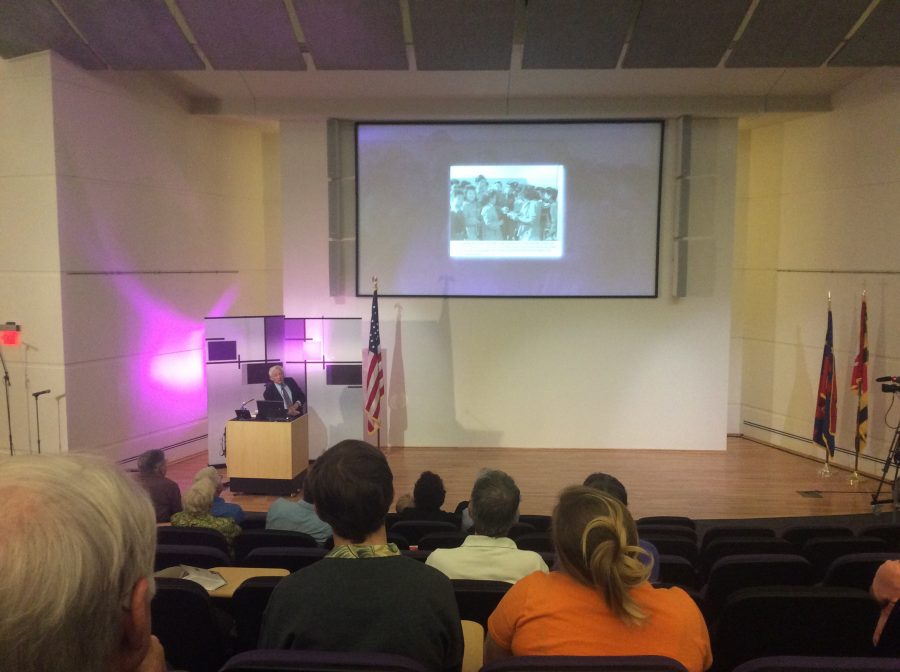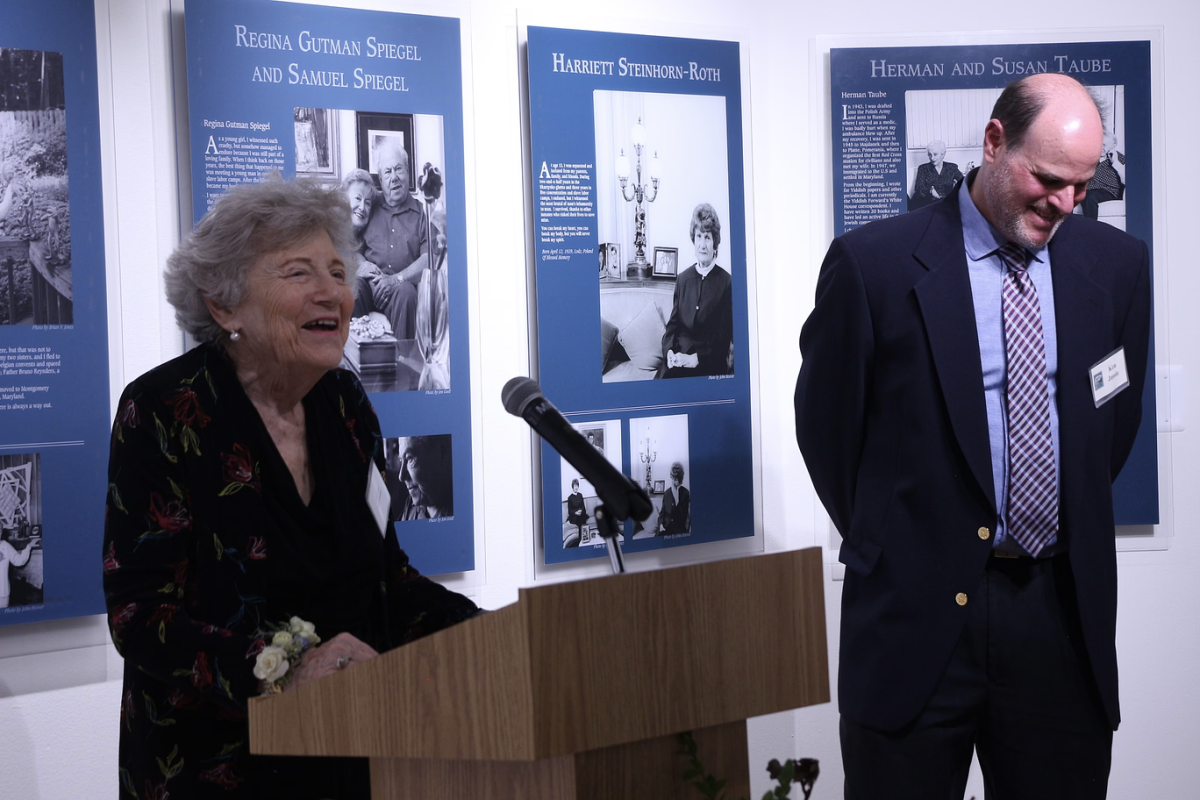
The acclaimed writer, journalist, and lecturer Richard Reeves visited Montgomery College to talk about the subject of his new book, “Infamy: The Shocking Story of the Japanese-American Internment in World War II.”
Reeves was the former Chief Political Correspondant for the New York Times and he has written a number of acclaimed books on topics including President Kennedy, Reagan, Nixon, and the Middle East. The subject of his lecture was his most recent work, “Infamy: The Shocking Story of the Japanese-American Internment in World War II” (Henry Holt and Co.) which chronicles the injustices of the Japanese internment.
The Japanese Internment is an obscure topic that’s not widely discussed in the United States. Though it is a required subject in the California education curriculum, most states have failed to awknowledge the massive incarceration of tens of thousands of Japanese Americans, most of whom were US citizens.
Richard Reeves claims that the US government has kept largely silent on the matter, since they have realized that the entire affair was a mistake. At the same time, the Japanese who were imprisoned have remained silent in an effort to put the past behind them.
In his lecture, Reeves recounted how after the Japanese bombing of Pearl Harbor, the US was in a collective uproar as the hysteria of entering a world war swept through the nation. It seemed to be an obvious aftermath that the Japanese residing in America would be rounded up into camps, even though such a policy was never enacted against Germans or Italians.
He went on to explain that the press was a leading champion for Japanese internment, most notably the LA Times. Even Theodore Giesel, who would later become known as Dr. Seuss, drew a propaganda cartoon depicting Japanese Americans as saboteurs.
According to Reeves, FDR himself firmly supported the internment policy because of his belief that the Japanese were a violent and inferior race. He issued executive order 9066 in Feb. 1942, which authorized the mass incarceration of the Japanese.
When the internment program was put into action, the Japanese were told that they were being evacuated for their own protection and they cooperated, wanting to prove their loyalty and worth as Americans. They were put onto trains and hauled to concentration camps, which was a term used by the US government. But when the Japanese arrived, they noticed that the soldiers, tanks, and gun turrets were pointed inwards, not out.
The Japanese internees soon faced rudimentary and squalid conditions within these camps as they spent the next few years as prisoners. Many of the interned were doctors, lawyers, and business owners who had lost their former lives along with their worldly possessions. Many never recovered from the losses suffered during their times in the camps.
Imperial Japan was an evil regime that treated many nations with brutality and injustice. The regime’s war crimes were in the same league as the Nazis and they still go largely unanswered for. Hard measures and policy to combat such a regime is not necessarily unwarranted, but the Japanese internment was a breach of core American values and it is an American concern more than a Japanese concern.
To this day, the internment is considered one of the greatest violations of the Constitution in the short history of the United States. The fact that US citizens were imprisoned without a trial, against the guarantees of the Constitution, in their own homeland is a worrying precedent.
Reeve’s described policymakers at the time as “men who treated the constitution like a piece of paper.” He wrote “Infamy” in the hopes that spreading awareness on this event will help prevent another similar episode in American history.








